Solomon Islands - International tourism, number of arrivals
The value for International tourism, number of arrivals in Solomon Islands was 4,400 as of 2020. As the graph below shows, over the past 25 years this indicator reached a maximum value of 28,900 in 2019 and a minimum value of 4,400 in 2020.
Definition: International inbound tourists (overnight visitors) are the number of tourists who travel to a country other than that in which they have their usual residence, but outside their usual environment, for a period not exceeding 12 months and whose main purpose in visiting is other than an activity remunerated from within the country visited. When data on number of tourists are not available, the number of visitors, which includes tourists, same-day visitors, cruise passengers, and crew members, is shown instead. Sources and collection methods for arrivals differ across countries. In some cases data are from border statistics (police, immigration, and the like) and supplemented by border surveys. In other cases data are from tourism accommodation establishments. For some countries number of arrivals is limited to arrivals by air and for others to arrivals staying in hotels. Some countries include arrivals of nationals residing abroad while others do not. Caution should thus be used in comparing arrivals across countries. The data on inbound tourists refer to the number of arrivals, not to the number of people traveling. Thus a person who makes several trips to a country during a given period is counted each time as a new arrival.
Source: World Tourism Organization, Yearbook of Tourism Statistics, Compendium of Tourism Statistics and data files.
- Thematic map
- Country comparison
- Country ranking
- Download data to Excel
Development Relevance: Tourism is officially recognized as a directly measurable activity, enabling more accurate analysis and more effective policy. Whereas previously the sector relied mostly on approximations from related areas of measurement (e.g. Balance of Payments statistics), tourism today possesses a range of instruments to track its productive activities and the activities of the consumers that drive them: visitors (both tourists and excursionists). An increasing number of countries have opened up and invested in tourism development, making tourism a key driver of socio-economic progress through export revenues, the creation of jobs and enterprises, and infrastructure development. As an internationally traded service, inbound tourism has become one of the world's major trade categories. For many developing countries it is one of the main sources of foreign exchange income and a major component of exports, creating much needed employment and development opportunities.
Limitations and Exceptions: Tourism can be either domestic or international. The data refers to international tourism, where the traveler's country of residence differs from the visiting country. International tourism consists of inbound (arrival) and outbound (departures) tourism. The data are from the World Tourism Organization (WTO), a United Nations agency. The data on inbound and outbound tourists refer to the number of arrivals and departures, not to the number of people traveling. Thus a person who makes several trips to a country during a given period is counted each time as a new arrival. The data on inbound tourism show the arrivals of nonresident tourists (overnight visitors) at national borders. When data on international tourists are unavailable or incomplete, the data show the arrivals of international visitors, which include tourists, same-day visitors, cruise passengers, and crew members. Sources and collection methods for arrivals differ across countries. In some cases data are from border statistics (police, immigration, and the like) and supplemented by border surveys. In other cases data are from tourism accommodation establishments. For some countries number of arrivals is limited to arrivals by air and for others to arrivals staying in hotels. Some countries include arrivals of nationals residing abroad while others do not. Caution should thus be used in comparing arrivals across countries.
Statistical Concept and Methodology: Statistical information on tourism is based mainly on data on arrivals and overnight stays along with balance of payments information. These data do not completely capture the economic phenomenon of tourism or provide the information needed for effective public policies and efficient business operations. Data are needed on the scale and significance of tourism. Information on the role of tourism in national economies is particularly deficient. Although the World Tourism Organization reports progress in harmonizing definitions and measurement, differences in national practices still prevent full comparability. Arrivals data measure the flows of international visitors to the country of reference: each arrival corresponds to one in inbound tourism trip. If a person visits several countries during the course of a single trip, his/her arrival in each country is recorded separately. In an accounting period, arrivals are not necessarily equal to the number of persons travelling (when a person visits the same country several times a year, each trip by the same person is counted as a separate arrival). Arrivals data should correspond to inbound visitors by including both tourists and same-day non-resident visitors. All other types of travelers (such as border, seasonal and other short-term workers, long-term students and others) should be excluded as they do not qualify as visitors. Data are obtained from different sources: administrative records (immigration, traffic counts, and other possible types of controls), border surveys or a mix of them. If data are obtained from accommodation surveys, the number of guests is used as estimate of arrival figures; consequently, in this case, breakdowns by regions, main purpose of the trip, modes of transport used or forms of organization of the trip are based on complementary visitor surveys.
Aggregation method: Gap-filled total
Periodicity: Annual

Classification
Topic: Private Sector & Trade Indicators
Sub-Topic: Travel & tourism
Note: This page was last updated on December 28, 2019
Home | About | Search | Site Map | Blog | Indicadores en Español

No spam. We promise.

Solomon Islands Factsheet
Discover the total economic contribution that the Travel & Tourism sector brings to the Solomon Islands and the world in this data-rich, two-page factsheet.
Discover the direct and total economic contribution that the Travel & Tourism sector brings to the Solomon Islands’s economies in this comprehensive report.
Discover the direct and total economic contribution that the Travel & Tourism sector brings to the Solomon Islands in this comprehensive report.
Create an account for free or login to download
Over the next few weeks we will be releasing the newest Economic Impact Research factsheets for a wide range of economies and regions. If the factsheet you're interested in is not yet available, sign up to be notified via the form on this page .
Factsheet details
This factsheet highlights the importance of Travel & Tourism to the Solomon Islands across many metrics, and features details such as:
- Contribution of the sector to overall GDP and employment
- Comparisons between 2019 and 2023
- Forecasts for 2024 and 2034
- International and domestic visitor spending
- Proportion of leisure vs business spending
- Top 5 inbound and outbound markets
This latest report reveals the importance of Travel & Tourism to the Solomon Islands in granular detail across many metrics. The report’s features include:
- Absolute and relative contributions of Travel & Tourism to GDP and employment, international and domestic spending
- Data on leisure and business spending, capital investment, government spending and outbound spending
- Charts comparing data across every year from 2014 to 2024
- Detailed data tables for the years 2018-2023 plus forecasts for 2024 and the decade to 2034
Purchase of this report also provides access to two supporting papers: Methodology and Data Sources and Estimation Techniques.
This factsheet highlights the importance of T&T to this city across many metrics, and features details such as:
- Contribution of the sector to overall GDP and employment in the city
- Comparisons between 2019, 2020 and 2021, plus 2022 forecast
- Proportion of the T&T at city level towards overall T&T contribution at a country level
- Top 5 inbound source markets
In collaboration with
Supported by.

- Visit Our Corporate Site

- Self-Contained
- Birdwatching
- WWII History
- Scuba Diving
- How to Get Around
- How to Get Here
- What to bring
- Travel Tips
- Visa requirements
- Itineraries
- History of the Solomons
- People & Culture
- Flora & Fauna
- Music & Art
- Under the Water
- Untold Stories of the Solomons
- Media Articles
- Press Release
- Solomon Islands International Visitors Survey
- Travel Agents Specialist Program
Solomon Islands tourism numbers slip back into positive growth

- Feature Articles
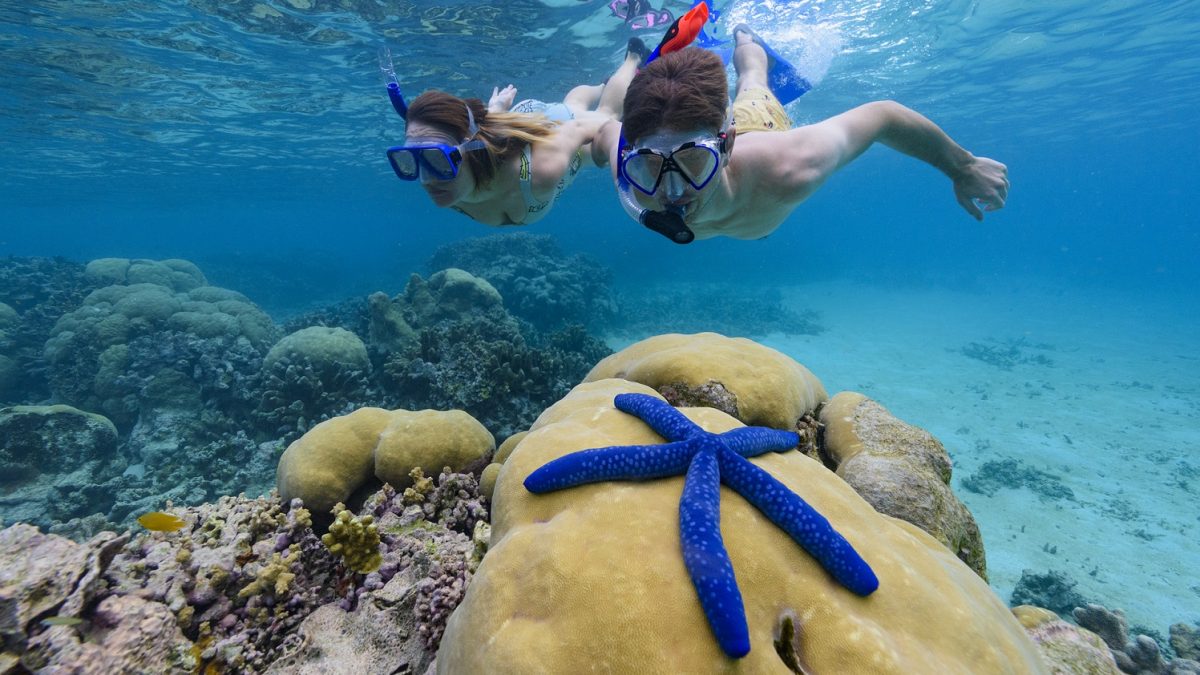
Image: Chris McLennan
Newly released Solomon Islands visitor arrival figures for Q1 2023 show the destination has equalled numbers achieved for the same period in 2020 before the country initiated a border closure which saw the country cut off from the world for more than 800 days.
The figures, released by the Solomon Islands National Statistics Office (SINSO), reveal a total of 3,940 international visitors travelled through Honiara International Airport between January and March 2023, the figure pipping the Q1 2020 3,880 result by 1.5 percent.
Australians again continue to make up the bulk of the visitors, accounting for 36.2 percent of the Q1 total with a total of 1,426, a slight drop (minus 2.5 percent) on the 1,463 figure achieved in Q1 2020.
The biggest growth for the quarter came from the US market where numbers increased from 208 in Q1 2020 to 351 across the same period this year – a jump of 68.7 percent.
Arrivals from Papua New Guinea rose from 261 to 319, an increase of 22.2 percent while Fiji figures dipped 9 percent.
New Zealand visitor arrivals for Q1 also showed a slight downturn over the corresponding period in 2020, dropping 11.6 percent from 267 to 236.
Tourism Solomons CEO (Acting) Dagnal Dereveke said the tourism office was keeping a very close eye on the New Zealand market where he hopes numbers will climb strongly going forward as a result of Solomon Airlines’ recent decision to commence an Auckland-Port Vila-Honiara service on 05 June.
Mr Dereveke said he remains cautiously confident that continuing efforts, good marketing, and ever-building international confidence in the Solomon Islands, the destination will meet its 2023 targets across all target markets.
“Our international marketing strategy remains fixed on promoting core product offerings where we hold a competitive edge or can compete with our opposition,” he said.

- Industry News
Solomon Islands Tourism Numbers Slip Back In Positive Growth

Honiara, Solomon Islands – Newly released Solomon Islands visitor arrival figures for Q1 2023 show the destination has equalled numbers achieved for the same period in 2020 before the country initiated a border closure which saw the country cut off from the world for more than 800 days.
The figures, released by the Solomon Islands National Statistics Office (SINSO), reveal a total of 3,940 international visitors travelled through Honiara International Airport between January and March 2023, the figure pipping the Q1 2020 3,880 result by 1.5 percent.
Australians again continue to make up the bulk of the visitors, accounting for 36.2 percent of the Q1 total with a total of 1,426, a slight drop (minus 2.5 percent) on the 1,463 figure achieved in Q1 2020.
The biggest growth for the quarter came from the US market where numbers increased from 208 in Q1 2020 to 351 across the same period this year – a jump of 68.7 percent.
Arrivals from Papua New Guinea rose from 261 to 319, an increase of 22.2 percent while Fiji figures dipped 9 percent.
New Zealand visitor arrivals for Q1 also showed a slight downturn over the corresponding period in 2020, dropping 11.6 percent from 267 to 236.
Tourism Solomons CEO (Acting) Dagnal Dereveke said the tourism office was keeping a very close eye on the New Zealand market where he hopes numbers will climb strongly going forward as a result of Solomon Airlines’ recent decision to commence an Auckland-Port Vila-Honiara service on 05 June.
Mr Dereveke said he remains cautiously confident that continuing efforts, good marketing, and ever-building international confidence in the Solomon Islands, the destination will meet its 2023 targets across all target markets.
“Our international marketing strategy remains fixed on promoting core product offerings where we hold a competitive edge or can compete with our opposition,” he said.
Atama Tamanilo
Related posts.

Pacific Resort Hotel Group Receives Prestigious Nomination for 2024 World Travel Awards

Buyer Registrations Close for South Pacific Tourism Exchange (SPTE) 2024

Collaborate with Fiji Pocket Guide this May!
- Disclosures
- Insights & Reports
Owned by 186 member countries and consistently rated AAA/Aaa. IFC aims to achieve our mission of promoting development by providing debt and equity to the private sector, through a range of benchmark and bespoke products.
- Governments
- Apply for Financing
- IFC Careers
- General Inquiries
Manual or Guideline
Solomon Islands Tourism Industry Guides for Investors and Government
Related reports.
The launch of these guides follows the release in 2021 of Boosting Tourism: Environmental and Social Diagnostic Study for the Tourism Sector in Solomon Islands’ Western Province , which gives investors an overview of the potential environmental and social risks, impacts, and opportunities of the investable sites identified.

This website stores cookies on your computer. These cookies are used to collect information about how you interact with our website and allow us to remember you. We use this information in order to improve and customize your browsing experience and for analytics and metrics about our visitors both on this website and other media. To find out more about the cookies we use, see our Cookies Policy .
If you decline, your information won’t be tracked when you visit this website. A single cookie will be used in your browser to remember your preference not to be tracked.
Solomon Islands Tourism Statistics
Solomon islands sb: international tourism: expenditures, view solomon islands's solomon islands sb: international tourism: expenditures from 1995 to 2016 in the chart:.
Solomon Islands SB: International Tourism: Expenditures: % of Total Imports
View solomon islands's solomon islands sb: international tourism: expenditures: % of total imports from 1995 to 2016 in the chart:.
Solomon Islands SB: International Tourism: Expenditures: for Passenger Transport Items
View solomon islands's solomon islands sb: international tourism: expenditures: for passenger transport items from 1995 to 2016 in the chart:.
Solomon Islands SB: International Tourism: Expenditures: for Travel Items
View solomon islands's solomon islands sb: international tourism: expenditures: for travel items from 1995 to 2016 in the chart:.
Solomon Islands SB: International Tourism: Number of Arrivals
View solomon islands's solomon islands sb: international tourism: number of arrivals from 1995 to 2016 in the chart:.
Solomon Islands SB: International Tourism: Receipts
View solomon islands's solomon islands sb: international tourism: receipts from 1995 to 2016 in the chart:.
Solomon Islands SB: International Tourism: Receipts: % of Total Exports
View solomon islands's solomon islands sb: international tourism: receipts: % of total exports from 1995 to 2016 in the chart:.
Solomon Islands SB: International Tourism: Receipts: for Passenger Transport Items
View solomon islands's solomon islands sb: international tourism: receipts: for passenger transport items from 1995 to 2016 in the chart:.
Solomon Islands SB: International Tourism: Receipts: for Travel Items
View solomon islands's solomon islands sb: international tourism: receipts: for travel items from 1995 to 2016 in the chart:.
Explore our Data

Solomon Islands Tourism Tips, Facts, + Complete Travel Guide
Posted on Last updated: December 14, 2022
This year I had the privilege of being able to visit the Solomon Islands – an incredibly untouched and authentic island nation in the South Pacific. Solomon Islands Tourism is only just gaining popularity, as the country is actually one of the ten least visited nations in the world.
The island nation is spread out over more than 900 islands in 900 miles, with six main islands accessible from each other mainly via short internal flights. The country is very spread out, and consists of both mountainous/volcanic islands with dense jungles to flat white sandy beach islands laden with palms.
The Solomon Islands are laden with coral reefs and impossibly clear water, and are teeming with wildlife both above and below the surface. They have some of the most untouched and magnificent fishing, surfing, diving, and wildlife-spotting locations in the world, which you are likely to have all to yourself on any given day.

The people of the Solomon islands are mostly of Melanesian descent, with portions of Polynesian and Micronesian descendants as well. Locals are lovely and welcoming, however often intrigued and confused about the sight of visitors (more or less depending on where you go!). They’ve had quite a tumultuous history in the Solomons, being one of the main battlegrounds between the USA and Japan during WW2 and also periods of civil tensions and fighting in the late 90’s/early 00’s.
I was invited by Visit Solomon Islands to experience Solomon Islands tourism with my friend (aka instagram husband) Dana of The Wandering Donut , and they planned a jam-packed week for us both. Our trip started off on a high note when we were upgraded to business class on Solomon Airlines (woo!), and that high note maintained the entire week.
After a few weeks of bad weather, we apparently brought the sun with us from Australia and we had an almost-seamless week of lovely weather, fascinating history, incredible photo ops, beautiful locations, and LOTS of my two favorite things – adventures & sunsets! 😉
For hotel info, check out my separate article on Solomon Islands hotels.

Pssst – PIN ME to your Pinterest boards to save for later – this is a loooooong Solomon Islands Tourism Guide!
Quick Solomon Islands Facts:
Solomon Islands Capital: Honiara, on the island of Guadalcanal (famous for a WW2 battle of the same name)
Solomon Islands Population: 611k (and rising steadily but slowly)
Solomon Islands Religion: 95% Christian – however, there were prevalent headhunting tribal traditions before the arrival of Christian missionaries.
Solomon Islands Climate: There are basically two seasons in ‘the Sollies,’ the dry (and cooler) season April to October and the wet (and warmer) season the other part of the year. The temperatures remain quite temperate year-round, with averages of 27 degrees Celsius (about 80F) year round.
Solomon Islands Language : The official language in the Solomon islands is English. However most of the population speak a fascinating dialect of English called Solomons Pidgin. This language is a mixture of Creole languages (of which a few more are spoken in certain parts of the country as well) with a largely phonetically spelled/pronounced version of English. A lot of words/signage can make sense in English if you sound them out. See a photo + explanation down the end of this post!
Solomon Islands Economy: The main exports/foreign exchange from the country are timber and fisheries, with lots of palm oil and copra as well. Solomon Islands tourism is growing industry as well with a ton of potential, but still requires government support for infrastructure. It remains one of the least visited countries in the world!
Solomon Islands People: The people of the Solomon Islands are thought to have first migrated to the area around 3,000 years ago from Southeast Asia, forming the predominantly Melanesian archipelago which includes a few surrounding countries as well. There are also significant populations of Micronesian and Polynesian people as well.
One of the most interesting qualities about the people of the Solomon islands is their unique gene to produce blonde hair alongside dark skin – which is thought to have evolved from a diet rich in seafood and lifestyle rich in sunlight. About 10% of the population have naturally blonde hair. See below for a brief Solomon islands history!
- Betelnut: one of the fascinating cultural traditions of the Solomon Islands the the use of betelnut, a nut grown locally and chewed. You’ll notice that many people of the Solomon Islands’ teeth and gums are stained red with the stuff. It’s something that is done socially with friends, and is a slight stimulant much like coffee.

Solomon Islands History (In Brief)
The Solomon islands were home to indigenous tribes and peoples since they were first settled around 2000BC. In the mid 1500’s, a Spanish explorer ‘discovered’ them and named them the Isles of Solomon, thinking he had found the source of the riches of the biblical figure of the same name. This is why many islands still have Spanish names.
The islands were left mostly alone until the late 1800’s, when the occasional missionary or trading ship would make contact. Also during this time, many ships from Australia and Fiji began ‘blackbirding,’ or abducting Solomon Islanders to labour on plantations (which laid some of the foundations for the pidgin dialect of English that made it back to the islands).
In 1893 the Solomon islands became a British Protectorate, which it remained for decades. The islands were then occupied in 1942 by Japanese WW2 troops, and American troops soon after – leading to several years of intense and crucial battle which exploited and damaged the nation, but left it with a new identity.
After the war the new capital, Honiara, was established next to USA’s Henderson airstrip, and the Islands became independent from British rule in 1978. They remain close with British rule and are a member of the Commonwealth.
Infrastructure was improved at a slow rate until ‘the tensions’ of 1998-2003, which was a period of battle and civil unrest between the islands of Guadalcanal and Malaita. Many residents of both islands were displaced or forced to flee conflict, and there were periods of violence until 2003 when the RAMSI (Regional Assistance Mission to Solomon Islands) or ‘Helpem Fren” (‘help a friend’ in pidgin) arrived.
RAMSI was a force of a few thousand soldiers from Australia, New Zealand, and many other Pacific Island Nations who arrived to help restore order and disarm militias, which was hugely successful.

What to Know Before Considering Visiting the Solomon Islands
Before considering visiting the Solomon Islands, there are a few things you must know. The islands are still very untouched, and receive under 25,000 visitors per year (many of which visit on business or research purposes). Although they still lack the complete infrastructure to support mass tourism, they are very well suited to the off-the-beaten-path traveler who seeks some authenticity in their ventures.
You won’t find massive bus stations, decked-out resorts, tourism-directed advertisements and signage, or travel agencies all over the place eager to sign you up for your next tour. Most excursions and transport will be booked for you through your hotel, and Solomon Islands tourism leaves a bit more of your trip up to your own interpretation.
There aren’t many gift shops, touristy malls, or souvenir markets. I couldn’t find many places to get souvenirs/arts/crafts outside of Honiara, and most of the shopping malls and crowded food markets were simply stocked with necessities for locals and no tourist bait.
Essentially, what I am saying is that it’s certainly no Hawaii, but that’s what makes the Solomon Islands so intriguing, authentic, and alluring.

Spotting islands from the plane, and little reef sharks from the pier!
Who Should Visit the Solomon Islands?
Because ‘the Sollies’ are more suited to a certain type of traveler and not really for others, I’ve made this handy dandy little chart listing out the types of people who would love Solomon Islands tourism and those who may not.
DEFINITELY COME IF YOU ENJOY:
- Scuba Diving – Solomon Islands scuba diving is some of the best in the world
- Fishing – Amazing fishing and sport fishing, prolific sea life
- Surfing – Remote + untouched reef breaks with perfect waves
- Wildlife Spotting/Bird Watching – some of the most biodiverse places in the world (especially certain islands) and popular for birds
- Eco and rustic travel and experiencing the true identity of a place
- Adventure Travel – snorkeling, scuba, fishing, helicopter, hiking (volcanoes), jungle/rainforest walks
- Culture – visiting communities/villages and interacting with locals to learn their customs and traditions
- Being remote + in nature without much contact with the outside world (e.g. wifi)
- Fascinating World War II history, memorials, ruins, museums, and artifacts
- Potentially being the only people staying at an island hotel for a few days – getting to know the locals and workers
- (Truly) untouched island paradises with clear blue water, sandbars, dozens of tiny white sand islands with jungle vegetation
- Freshly prepared seafood- lobster, squid, shellfish, white fish, and more
- Interacting with kind locals who would love to chat about where you’re from
MAYBE DON’T COME IF YOU ARE LOOKING FOR:
- A luxurious five star resort experience with people waiting on your hand and foot
- A cheap party travel destination/a cheap place to go and get wasted for the weekend
- Busy cities and populated resorts with lots of other international guests
- Infrastructure on par with the Western World
- Being able to constantly connect to wifi and stay in contact with the outside world/stream movies/upload photos/etc
- Lots of options to go out and socialize at night
- Big cities with lots of amenities/being able to access all food/drink/convenience/entertainment needs at any given moment

I was having far too much fun, clearly!
How to Get to the Solomon Islands (Solomon Islands Airports)
The Solomon Islands have two international airports – one of which actually just opened in late March 2019. Before the Munda International Airport opened its doors, you could only arrive in the Solomon Islands via a flight through the capital, Honiara.
Brisbane is the main international hub through which most flights to the Solomon Islands will pass. There are a couple flights per day from Brisbane to Honiara (and vice versa – usually two). There are only a few other international flights out of Honiara to other South Pacific Islands such as Fiji, Kiribati, and Vanuatu, but other than that all must pass through Brisbane.
However, the recent opening of the Munda International Airport has and will continue to open up many new doors for Solomon Islands tourism. The flights from Brisbane to Munda were still in the trialing phase as of March 2019.
But, they will continue to expand and proliferate through the year, in hopes that it will expand visitation and potentially investment in Solomon islands tourism and infrastructure. The main thing that must be established is the immigration system, but all plans are in place to have even cheaper flights to this part of the Solomon Islands soon.
The international flights to the Solomon Islands will have both business and economy class. Business class seats come with higher caliber meals and alcohol, however the meals in the economy class are also quite good with (lower quality) wine and drinks as well. See below for a Solomon Islands budget/pricing section.

Getting Around in the Solomon Islands
The Solomon island chain is much larger than it may seem. As I mentioned earlier, it covers a distance of over 900 miles from Papua New Guinea to Vanuatu. Let me repeat that – nine hundred miles. This is no small feat to cross, folks! You can’t exactly get from one side to the other via small motorboat, and the infrastructure does not yet support large-scale ferry services to bring people around, especially in times of storms/rain.
So, as of now, you can get around the islands themselves by car/van of course, between some of the closer islands via small motorboat, and the rest is left up to tiny internal flights run by Solomon Airlines.
Solomon Islands Internal Flights
From Honiara you can take short flights to just over twenty islands/airports in the Solomon Islands. These flights go through the smallest airports you’ve ever seen, with singular check-in counters and one-human-looking-in-your-bag security checkpoints (if anything), and board onto the cutest little propeller planes on single-lane runways. Some flights have slightly larger propeller planes, while the shortest flights take tiny prop planes without much more than a few dozen seats.
My Experience/What to Know About Solomon Airlines
I couldn’t stop giggling about the tiny size of everything at the island airports. They were essentially one-room buildings with a counter and back door that lead right out to the tarmac. Baggage claim at Solomon Islands airports is nothing more than a cart of everyone’s bags being rolled out to the building, and leaving everyone to work together/scramble a bit between each other to find their bag.
The Honiara Domestic Airport was the only one with a security check, which was comprised of a woman checking inside everyone’s bags. This was also the only one with multiple rooms, with a waiting room and another with a few chairs (far less than the amount of seats on the plane, ha) after security.
The Gizo Airport is one of the most unique in the world; it’s literally an airstrip that is an island itself, and the only way to get to the mainland/other islands from it is by motorboat. It’s the type of thing where you’re looking out the airplane window seeing the sparkling blue ocean getting closer and closer as you descend, and momentarily getting slightly worried that land actually won’t appear because you can’t see land/the airstrip until you’re a mere few meters off the ground.
Picture locals selling coconuts on a grassy patch just outside the open ‘terminal,’ with a couple airport baggage carts laying beside them waiting for the chance to be used. You then make your way to a small pier where motorboats from various hotels are waiting to pick up their next patrons, for quite possibly the coolest airport taxi ride you’ll ever take.
The Munda Airport is at the end of a tiny main road of town, bordered by a single bar, a couple small hotels, some Chinese shops, market stalls, and a grocery. It’s a single room with a check-in counter and a bench around the outside, with tons of informational posters (likely made on Microsoft Word) on the walls about different hotels and islands to visit in the area.
Planes from here back to Honiara will come from Gizo, so when you hear the plane land you’ll know it’s time to board. After some people have deplaned and entered the small building from the tarmac, you’ll jump on the small plane which will have patrons still on it from Gizo. Your ticket might even be written by hand.
What to Know about Internal Flights on Solomon Airlines:
- These flights will have some of the best airplane window views you’ve ever seen. Make sure to keep your eyes fairly glued to the windows… by doing your best to get a window seat.
- The seats may be assigned on the tickets (sometimes), but it’s essentially a free-for-all on all internal flights. This means the seats are first-come-first-serve. Make sure to try and line up first to have your pick of seats so you can get one with a window for the epic viewage.
- Make sure to pack your camera(s) in your carry-on so you can take photos out the window. Trust me.
- The snack we got was a fascinating ‘butter cracker sandwich’ that tasted a bit lemon-y to me. Make sure to try this interesting local snack.
- There will be lots of locals flying too. It might be a great opportunity to have a chat with someone who lives in the Sollies to get a fresh/authentic perspective on what it’s like and where they’re going.

Where to Travel/Things to Do in the Solomon Islands
Phew! Now that we have gotten the logistics out of the way, I assume if you’re still reading that you are the adventurous/getaway type of traveler. Great! There are LOADS of places for you to explore, all over the Solomons.
I’ll begin with a brief outline of what each place has to offer. Check out the best Solomon Islands hotels for reference as well – there are just a few in each destination.
Guadalcanal Island + Honiara
Guadalcanal Island is the largest of the Solomon Islands and home to the capital city, Honiara. The name Guadalcanal may be familiar to many due to a large and decisive World War 2 battle of the same name, between the US and Japan. As I mentioned above, battles in the Solomon Islands were some of the most crucial of the War, and just barely ended with US control over the Pacific rather than Japan moving closer toward Australia.
The Henderson Airstrip of Honiara (which is now the international airport) was the most crucial capture for the US Army; if control of that very airstrip was lost to Japan, the world may actually have ended up very differently today! Either way, there is a LOT of WW2 tourism in Honiara. There are many War sites, memorials, ruins, and museums to visit. The island was essentially ravaged by the war, and remnants can still be found to this day.
Honiara is also of course the capital and financial/governmental center of the Solomon Islands. It has the highest population and the hustle and bustle of a busier city. However, the Solomon Islands are one of few countries where the majority of the population still lives in rural communities (rather than most people gravitating to bigger cities for work), which is another reason it’s so authentic.
This also means that the capital city is not as big as one may imagine. There are a few main roads, a couple restaurants, a cafe or two, a central market, a yacht club (pretty much the only form of nightlife), some bigger hotels, and quite expansive suburbs around the city as well.

What to See and Do in Honiara + Guadalcanal
- US War Memorial and Japanese War Memorial – There is both a US and Japanese hilltop War memorial around the hills of Honiara. Here you can learn about how the War effected both countries, pay tribute to lives lost, and see lovely views.
- Art Museum – The Art Museum in the city center houses two rooms of local art. Art from the Solomon Islands, in my opinion, tends to be very vibrant, abstract, and ocean/nature focused. I adored some of the paintings here – one of them is still the background on my phone!
- National Museum – This museum was quite comprehensive, with Solomon Islands history all the way from prehistoric times (when the first humans are assumed to have arrived in the South Pacific), to the first people in the actual country, to the Spanish occupation and British Rule, to WW2, to the times of tension and RAMSI help. You could really learn everything you need about the islands at this museum if you had enough time.
- Vilu War Museum – This museum is a bit of a drive out of town, but is fascinating. It’s a ‘museum’ comprised of all the remnants of the War that a local man found (with some items he bought from others), which are laid out aesthetically in a field scattered with trees and flowers. You can see broken-down skeletons of both US and Japanese cannons, bombs, many different types of airplanes, propellers, artillery, tanks, and more. You can also learn about what each thing was and how it was used in the war.
- Honiara Central Market – This busy market is right in the city center and has locals selling every kind of food you can think of, and some crafts/jewelry too. It’s vibrant, bustling, and definitely worth a wander.
- Mbonege Beach Bonegi Shipwreck – at Mbonege beach you can see the rusty remains of an old Japanese War ship. This is a lovely beach on a nice day, and if the tide is low enough you can get a quite good view of the old ship. You can also snorkel around the wreck because it’s just a few dozen meters from the shore.
- Tenaru Falls Hike – Quite a bit farther into the hills outside the city, you’ll find a 1-2 hour waterfall hike. This adventure is perfect for having a quick getaway and experiencing more of the rainforest and nature of Guadalcanal.
- Lumatapopoho Cultural Village – you can visit this small traditional village to learn about how tribes used to: cook cabbage, make different food recipes, make clothing, thatch palm for building roofs, make fire, peel and eat beetlenut.
Where to Stay in Honiara
Our Honiara hotel was called Heritage Park . This hotel has a lovely property comprised of multiple two-story buildings with balconies overlooking the pool, palm trees, and even the sea. It’s right on a rocky shoreline with a beach bar, very high quality restaurant (and even quicker bar meals), buffet breakfast, and events during the week (such as movie night/parties at the bar).
Heritage Park had all we could have asked for – large spacious rooms with hot water, air conditioning, and even a small TV. Properties in Honiara will definitely have more fixings than in the islands – make sure to remember that!


My Experience on Guadalcanal/Final Thoughts
Guadalcanal was the first stop on our Solomon Islands trip, as I’m sure it will be for most people. Here Dana, Michael and I (the other travel writers/bloggers on the trip) did all the classic ‘touristing’ and visiting of memorials, museums, and well-known sites. It’s the best place to get a feel for the history and city-life vibe of the Solomon Islands.
We drove around in a van and ticked off the main sites, getting our first feel for the island nation. We spent a day going around the main city, and one a bit farther out of the city to sites farther away. The drives were bumpy but scenic, and I took in the tropical foliage that reminded me of something between Hawaii and Southeast Asia (which makes complete sense I suppose! 😛 )
I wandered alone around the central market, stopped at a cafe for coffee, slinked in and out of shops on the main road, and chatted with locals here and there. I appreciated the view of a rainbow from the rocky coast near the hotel, and picked at a burger in between swims in the hotel pool. We tried some delicious seafood and enjoyed the extremely warm hospitality of nearly everyone we interacted with.
Guadalcanal/Honiara is not going to be what many people picture of the Solomon Islands – which is pristine beaches and islands. Guadalcanal is the more grungy city where you learn more about history and how people really live and go about their days.

Savo Island
Savo is right off the coast of Guadalcanal Island and can be seen as one of the many adventure capitals of the Solomon Islands. It’s a small volcanic island with prolific wildlife and adventurous activities, and is quite easy to visit from a small village on Guadalcanal outside Honiara on one of your days there. Savo is best done as a day trip from one of the hotels in Honiara, and bookable from most hotels also.
What to See and Do on Savo Island
- Volcano Hikes – Savo is home to some easy (1 hour or less) and some harder (3+ hour) scenic treks up the volcano.
- Wild Dolphin Nursery – a stop on the way to Savo Island from Guadalcanal – spot some dolphins in the wild!
- Megapode Hatchery – Locals maintain hatcheries for megapode birds, which will lay their eggs on the sand at sunrise.
- Waterfall walks -there are many up in the rainforest
- Local Culture – There may be cultural displays and dancing in the villages
If you love the island, you can even stay at Savo Sunset Lodge for a few nights.
My Experience on Savo
Soooo, the weather was acting up like crazy the night before our Savo tour, causing us to have to make the tough call to cancel it. Unfortunately, this is a reality of a tropical destination (especially in the wet season), and we got to see some extra spots in and around Honiara instead. However, I have recommended the awesome activities that we were supposed to do with the Tourism Board above, plus a few more!

Ghizo Island, Gizo Town, + Surrounding Sites
Gizo is where you’ll reach the parts of the Solomon Islands that you may have imagined or seen in catalogues. This is where the best diving and fishing in the Solomon Islands are located, along with lots of surf breaks, tiny pristine islands, white sand beaches, palm-topped landscapes, and pretty-much-perfect sunsets.
The main larger island is called Ghizo, the capital of which is called Gizo (confusing, I know!). But, the tiny surrounding islands dotting the coastline are where the magic really happens. Surrounding the main island, you’ll find remote rustic resorts, private rentable homes, reefs perfect for snorkeling, untouched surf, and some of the clearest blue water in the world.
What to See and Do In Gizo
- Gizo Town – This is the main town of Gizo, with locals out and about near a few restaurants, a main strip of shops and restaurants, and a central food market. Grab a fresh coconut for sure!
- Diving – The Gizo Dive Shop is owned by an American/Australian couple who have lived in the Sollies since the 80’s. They started it up from scratch, scouted out most of the dive sites themselves, and have built the region into one of the top dive areas in the whole world! Many dives and trips book up early these days, so get in early to make sure Danny is your dive guide.
- Fishing – With some of the most wildlife-rich dives in the world come some of the best places for fishing, as well! Fishing trips will be conducted from most resorts, with the hope of being able to catch a fresh seafood dinner.
- Boating – Many yachts sailing the south Pacific will stop from the Solomon Islands, and there are also sailing trips going around the islands as well. It’s a must to boat around the islands, especially in Gizo, and there are many multi-day diving and fishing boat trips too.
- Snorkeling – Also an absolute must, snorkeling in and around Gizo is incredible. Diving still takes the cake in terms of clear water and amazing views, but there are some stunning shallow reefs among the islands to check out as well.
- Sunsets – There are plenty of western-facing sand bars and beaches where you can catch a magnificent Solomon Islands sunset. Many hotels will have sunset boat trips – make sure to jump on one!
- Kennedy Island – Kennedy Island is just off the coast from Fatboys Resort, and is actually the island that JFK and his crew landed on after their ship was hit by a Japanese missile. It’s a tiny circular island with spongy white sand and and a jungle landscape – perfect for snorkeling and taking beautiful photos.
- Njari Island – The owners of Dive Gizo also own this island, which has one of the top-ranked dive sites in the entire world! It has lovely beaches and snorkeling as well.

Where to Stay in Gizo
We saw so many beautiful island resorts and convenient accommodations in Gizo. Here are a few:
- Fatboys Resort – This is where we stayed! There’s an overwater restaurant, beachside bungalows, kayaks, boat trips, kayaks, adventure sports, and more.
- Sanbis Resort – This resort is on the other side of the island that Fatboys is on. More amazing beachside bungalows, overwater pier/bar/restaurant, and amazing views.
- Imagination Island – This resort is an entire island in itself. It’s a few kilometers off the coast of the airport, and is a quaint and perfect little getaway with a few rooms, great food, and plenty of adventure + fishing trips.
- Gizo Hotel – If you don’t want an island resort and prefer to be in the town, the Gizo hotel is the choice for you. It’s right across from the market as has convenient facilities and a restaurant balcony over the town.
- Oravae Island Cottages – located on a tiny private island, the Oravae cottages are the best getaway you can possibly get! Think – rustic wooden houses right on the water, with an over-water swing as well.

My Experience in Gizo
When we arrived in Gizo, got off the plane, and immediately got on another boat and skimmed over beautiful blue water, I felt like the trip had finally begun. Arriving at the picturesque Fatboys resort was like something out of a dream, and Dana and I were squealing as we were greeted with colorful leis and fresh lemonade. It was the true island experience, and we felt so welcome and ready to explore.
We had so much fun taking photos, snorkeling, and having a traditional meal on Kennedy Island. Later that afternoon, we went on a fishing trip and were astounded to find (after a massive struggle) that we had actually hooked a reef shark – which we let free, of course!
We boated between the islands, snorkeling at every stop, and flew my drone and captured moments in each place we stopped. We woke up each morning with a delicious breakfast and finished each night with a fresh dinner, and even fed a few resident reef sharks off the overwater balcony.
One of my favorite moments from Gizo was our ‘ sunset wine-down,’ where we had a few glasses (bottles?) of wine on a pristine sand bar facing the sunset. After fiddling around for ages with cameras and tripods to get the perfect photo (and putting the drone up as well, of course!) we enjoyed a few too many glasses of wine with the water lapping up at our bare feet.
Gizo is a place you could spend lots and lots of time. It’s a true rustic island getaway, with attentive seaside accommodation and delicious food. If you can – spend the most time here!

Munda, Roviana Lagoon, + Surrounding Areas of New Georgia Island
As we jetted down a channel in our small open speedboat from Gizo to Munda, I noticed quite a big change in the landscape. We had gone from the sandy beaches of Gizo to a mangrove-bordered channel of New Georgia Island, with more of a deep green color than sea blue.
The vegetation was a bit different, with trees growing all the way to the water on many of the islands. This was our arrival to Munda – a small town on the Southern half of New Georgia Island. This is where I realized how varied the landscapes are on these islands – there’s truly a bit of everything, from mangroves to beaches to volcanoes to waterfalls.
Munda is surrounded by the Roviana Lagoon, which is home to some tiny sandy islands, some wildlife rich reserves, some mangrove-laden channels, and more. It’s yet another great hub for adventure, and we got up to plenty of activities here as well.
What to See and Do in Munda
- Munda Town – The main town is a few tiny streets with makeshift markets, a couple hotels, and a few stores.
- Roviana Lagoon – this lagoon may be mentioned on many Munda tours, and just refers to the calm sea area and islands between Munda town, Roviana Island, and almost all the way to Vonavona island. This area has a certain dialect and culture.
- Skull Island – this is a fascinating historical island on the way from Gizo to Munda. In brief (because I have more comprehensive posts coming soon!), it’s where they have left quite a lot of skulls from when the tribes here practiced headhunting. This ended with the coming of Christianity, and it was decided that the skulls would need to be moved somewhere more remote.
- Peter Joseph Museum – This began as a single man’s passion for searching/digging/finding artifacts from the War, and has turned into one of the most impressive War Museums in the Solomon Islands. It’s an entire building/room filled with everything from dog tags, lighters, coke bottles, soap boxes, and bullets to canteens, helmets, rifles, and even toothbrushes. It’s amazing to see what he has found and learn some stories from the artifacts.
- Scuba Diving – there are still plenty of places to dive in Munda as well as Gizo.
- Rainforest Walks, Rivers, and Waterfalls – hotels can also organize day-long treks through the island’s jungles, to waterfalls and viewpoints alike. You can even see crocodiles in the island’s rivers.
- Fishing Trips – This region is also great for fishing, and trips leave from the hotels regularly.
- Local Villages – many day tours from the hotels will include visits to local villages, and some tours include cultural villages only.
- Rendova island – About a 30-45 minute boat ride away is a stunning mountainous island called Rendova. It’s got a fantastic eco-lodge and a very visitor-friendly village with locals eager to share their traditions.

Where to Stay in Munda
- Qua Roviana – We stayed here. It was a block back from the water in Munda town, and had fine facilities, a kitchen, a living space, and more, with air conditioning in each room as well (huge plus!)
- Agnes Gateway Hotel – This is the biggest hotel in Munda town, right on the water. There’s a fantastic restaurant where we had all of our meals (helllooooo fresh lobster!) and they have both private and cheaper dorm options.
- Zipolo Habu Resort, Lola Island – Lola Island is closer to skull island, between the Roviana and Vonavona regions. The beachside resort here is also beautiful and rustic, with a great restaurant and reef sharks visible from the pier.
- Titiru Eco Lodge – We spent a full day here at Titiru and visiting the local village. The lodge is beautiful, with kayaking and SUP’ing possible right from the balconies of the rooms, amazing gardens, delicious food, and proximity to Ughele village. I would LOVE to come back and stay longer here.
My Experience in + Around Munda
At first, Munda area seemed a bit less tropical and more swampy than Gizo, but I was quickly proved wrong after visiting Skull Island, Rendova, and two other tiny islands off the coast of the town which are perfect for sunset (Kuru Kuru and Kundu Kundu, I believe). Munda is different in that it’s more diverse, with both mangrove forests, waterfall-dotted mountains and jungles, AND beautiful beaches (albeit a bit more overgrown).
Upon arrival, I had a quick walk around town. There really wasn’t too much to look at, but I did my best. I wandered through the market stalls made from makeshift tied tarps and sheets, and smiled at locals selling beetlenut, potatoes, and other roots and leaves.
I wandered past the town pub, coffee shop, and in and out of a Chinese grocery store, and all the way to the small airstrip before turning back around. The whole thing wouldn’t have taken me much more than ten minutes! I returned to the Agnes hotel where I enjoyed a coffee and watched local fisherman traverse the Roviana Lagoon on their long wooden canoe boats.
Outside of Munda Town we had a few fantastic excursions. We saw Skull Island from Lola Island, which was both eye-opening, sad, and fascinating. Our trip to the Peter Joseph museum really hammered into us even more the significance of the War in this part of the world – the thousands upon thousands of left-behind artifacts each told their own unique and heart wrenching story.
Our trip to Rendova was also a highlight – we saw the beautiful Titiru Eco-Lodge and got to kayak in the harbor – but I adored being able to walk through the nearby village. It was like the locals had stations set up to display cultural practices to us.
It started with a traditionally-dressed tribesman jumping out of the bushes and yelling at us at the top of his lungs; we were SO startled we nearly screamed, but soon realized that it was an (albeit extremely well-done) demonstration of painted men showing what it would have been like to land on this island a few hundred years ago.
We saw an old woman traditionally washing her baby in the river when we first walked up, followed by catching eels in the river, making traditional clothing, shaping wood, making toys, and even making and sampling local food recipes.
One of the most memorable moments of the trip (and our last activity) was watching sunset from the tiny islands off the coast of Munda town. After Dana and I (obviously) had one last beachy photoshoot, the sky turned red and pink with swirling colors within the clouds. Our jaws dropped to the floor and we knew that the Solomon Islands were sending us off in the best way possible – with my two favorite things, adventures & sunsets of course!

Solomon Islands Budget Notes
So – what should you budget for the Solomon Islands? The main thing to keep in mind is that, unfortunately, t he Solomon Islands aren’t cheap. This is no Southeast Asia; the Hapi Isles are quite remote, difficult to get to, and have quite high prices that keep the economy going.
I would say the restaurant prices are about on par with Australia. For basic meals/breakfast/lunch you’ll be looking at around $10-15USD, whereas for nicer meals and dinners you’ll be looking at around $15-30USD. This is at hotels/restaurants, however, and you can always shop at the markets to cook for yourself when you see fit.
For hotel rooms, you’ll be looking to pay about $120-$200USD/night. Some of the cheaper rooms will be a bit more basic, but for $200 you’ll get some nicer (although still often rustic!) beachside bungalows. For the more budget traveler, there are a couple cheaper simple twin room/dorm options on some of the islands for around $35-$50 per person.
Getting to the Solomon Islands may be the costliest part of the journey – flights are a bit fewer and far between, and therefore are pricier. However, the opening of the Munda international airport is showing a lot of promise for lower flight costs from Brisbane. Currently, the flights go for about $800-$1200 round trip to Honiara from Brisbane, depending on when you book. Add on whatever flight you’ll need to get to Brissy, and you have your budget! Just make sure to look out for the first flights from Brisbane to Munda, which are set to be cheaper.

Final Solomon Islands Tourism Tips – What to Know Before You Go
Lastly, I’ll leave you with a few final, yet extremely important notes on things to know before your Solomon Islands trip:
Passports + Visas
You must have at least 6 months validity on your passport to enter the country. Most visitors are granted visas upon arrival to the Solomon Islands, but make sure to check up about your country before you go. People from many European countries, the US, and the Commonwealth do not need a visa prior to arrival.
Medical Information
It is recommended to take Malaria pills during your visit to the Solomon Islands due to small pockets of malaria. Consult your doctor before your trip to stay up to date with the latest travel notices and injection recommendations. If you don’t have malaria pills, be SURE to bring strong bug spray!
Wifi in the Solomon Islands
Wifi in the Solomon islands is best described as a lack thereof. You’ll find much better (read: slow yet functional) wifi in Honiara, but as you get out to the more remote islands, wifi will be few & far between. Some resorts (such as Fatboys) have a wifi code that can only be used by one person at a time, and you may hear “the wifi isn’t working” more often than not.
But – this is not the kind of place you want to be spending connected to wifi, the Sollies are really a place to disconnect from the internet world and connect with the real world, amazing landscapes, other people, and wildlife.
Solomon Islands Food
Food in the Solomon Islands is, as I’m sure you can guess, very seafood-based. There will be tons of fish and shellfish, complimented by a lot of taro and potato for starch, rice, and local cabbage cooked in coconut milk. They cook up lots of home-grown veggies and have a bit of chicken and beef as well.
Money + ATM’s
The Solomon Islands currency is the Solomon Islands dollar. There’s about 8 SBD to 1 USD, just under 6 to the AUD, about 9 to the Euro, and just over 10.5 to the (current) GBP. There are ATM’s and currency exchanges in Honiara and a few solar-powered ATM’s in the islands. However, these ATM’s will always charge a fee, so if you can get some currency out before your trip you might be able to save a bit of money.
Tipping is not a part of the culture here and not necessary.
You should only purchase and drink bottled water here – no tap water, unfortunately!
Lastly, a few final Solomon Islands photos:

ONE MORE PIN! Don’t forget to pin this Solomon Islands tourism guide to your Pinterest Boards.

Well, I think that’s about it on Solomon Islands tourism – for now! I hope you have learned everything you need to know, but if I missed anything, go ahead and leave a comment below and I’ll get back to you!
Thanks so much to Visit Solomon Islands for hosting me – as always, all words are completely my own, and I look forward to quite a few more articles on one of the most intriguing and alluring countries I’ve had the pleasure of visiting.
More Content you may enjoy:
- Bali to Lombok Ferry Info
- Beachfront Airbnbs Tulum Mexico
- Bali Net Ned Hotels
- Ubud Restaurants with a View
- Best Bars in Uluwatu Bali
Saturday 4th of May 2019
Nice! The Solomons are in my list of options for potential South Pacific destinations, but I've not quite figured out where to go and what to expect before!
Sunday 5th of May 2019
Well I sure hope this post has helped you with a bit of clarification! Happy travels; I'm sure you'll love it.
Truly epic guide, I knew nothing about the Solomon Islands before but now I'm dying to visit!! This is exactly the type of place I love!
Oh this is so on my list! I have wanted to visit Melanesia for seeing the other type of blond gene, but diving and unspoiled beaches is something I am totally up for as well! I well in love with the Pacific ocean islands when I visited Palau, and I definitely want to visit Solomon islands as well!
It really is a fascinating gene, and the rest of the country is just as much so! :) I'd love to visit Palau one day too - I think this was just the beginning of my jaunt with the South Pacific!
Laureen Lund
Your photos are stunning. This is on my bucket list...missed it last time we passed through the area but I will definitely see this some day!
Thanks so much! It's such a photogenic place. Now that there's a new airport opening you should definitely plan a trip back one day!
Nat Geo Encounter Ocean Odyssey in New York City - Momma To Go Travel
[…] through Nat Geo Encounter begins in the Western Pacific Ocean, in the shallow waters off the Solomon Islands. Through computer technology, you are transported to a room that takes you to the ocean floor – […]
Privacy Overview
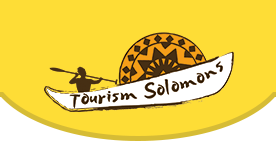
Solomon Islands Tourism - Corporate Website
Welkam frens and stakeholders.
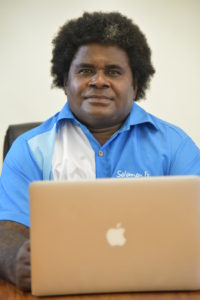
Welkam to the Solomon Islands, an undiscovered paradise, a scattered, emerald green necklace of 992 islands where time has chosen to stand still, where happy, smiling people go about their day to day lives ensuring the customs and traditions of yesteryear remain the very backbone of life in this true South Seas idyll.
Little has changed in the Solomon Islands since they were first discovered by Europeans in 1568 when Spanish explorers first sailed into this tucked away corner of the South Pacific. While vestiges of their visit remain in the many beautiful names bestowed upon parts of this archipelago, perhaps the most famous of all is Guadalcanal, the place where the armies of the world came together in destructive force during WW11 in a battle that was to change history.
Today the Solomon Islands has become such a breathtakingly fresh destination for those international travellers eager to get off the beaten track and immerse themselves in a centuries old culture while experiencing every niche travel experience this multi-faceted destination offers and which set our Hapi Isles so far apart from our South Pacific neighbours.
Tagio tumas – Dagnal Dereveke, Acting CEO Tourism Solomons
It’s Sol’talk…Our Latest News
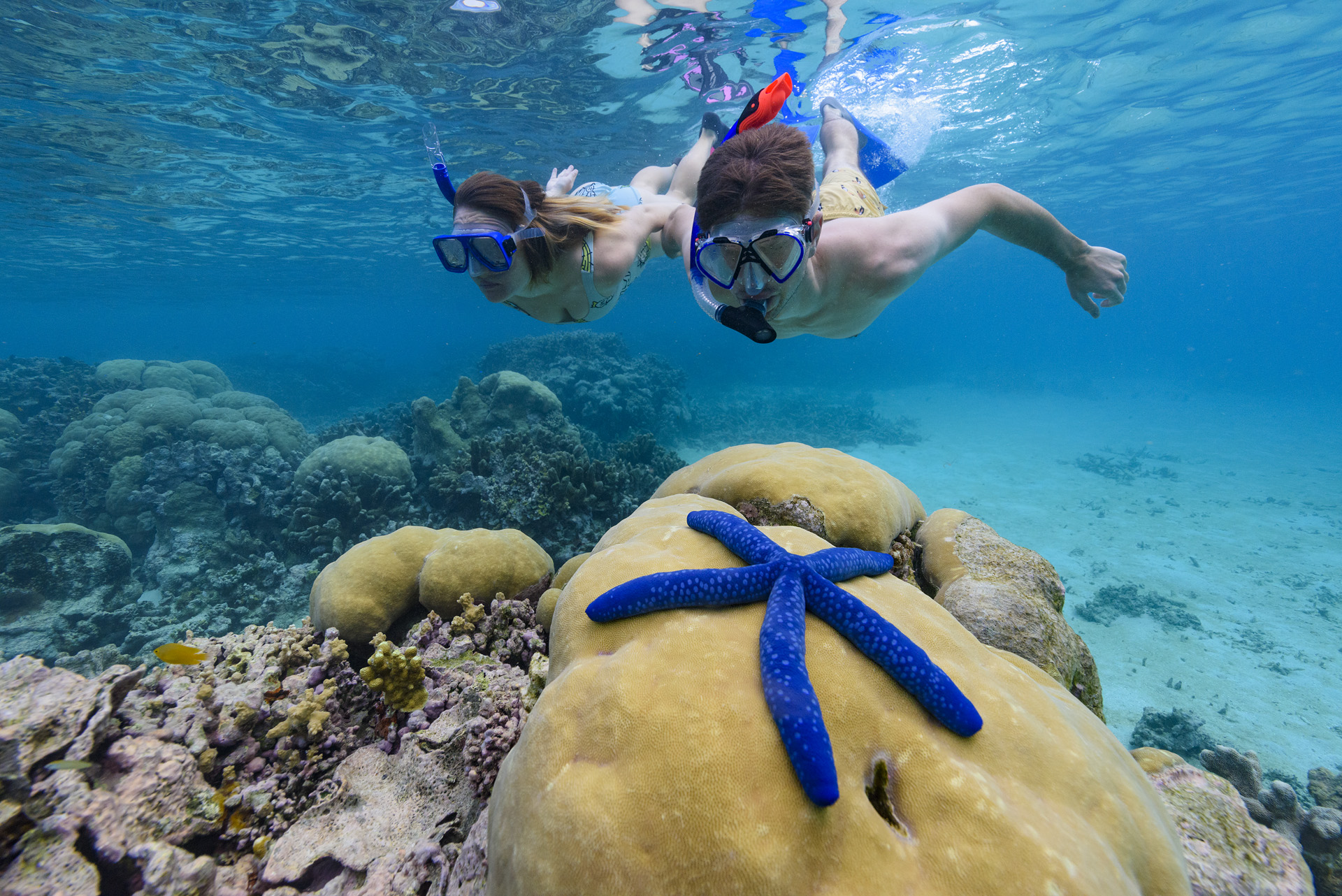
The Solomon Islands is no longer the Sleeping Giant of the South Pacific
As part of the rebranding for the Solomon Islands, not only are we focusing on a new image but to betray this image we are also […]
November 29, 2018

Diving into DEMA, November 2018
Every year the Diving Equipment & Marketing Association (DEMA), hosts the annual DEMA Show in the United States, dive and travel industry professionals and exhibitors worldwide. […]
November 20, 2018
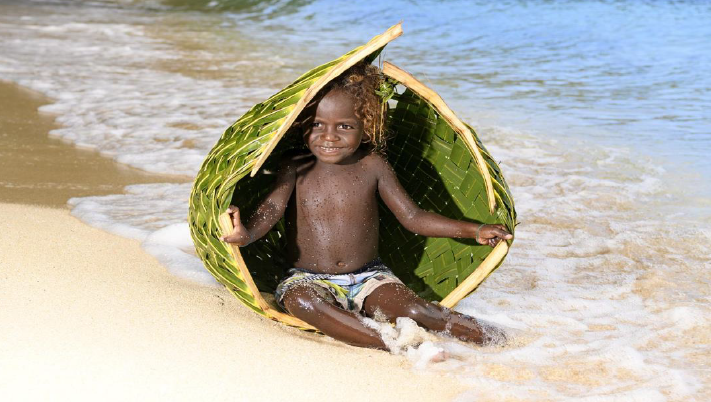
Win a pre-paid Visa card with Tourism Solomons
As part of the launch of its new ‘Solomon Is’ re-branding initiative, Tourism Solomons is offering travel agents to win a $100 pre-paid Visa card or […]
November 14, 2018
Key Focus Areas
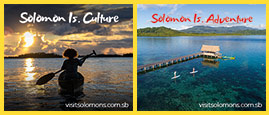
Provide marketing and promotional support to the Solomon Islands tourism industry.
Partnerships
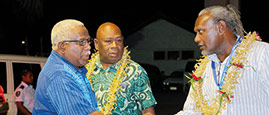
Forge strong partnerships and investment between public and private sector stakeholders.
Specialists
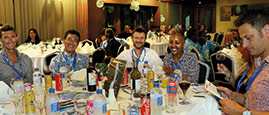
Develop and train international travel agents to become Solomon Islands Specialists.
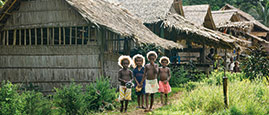
Identify and support the unique and distinctive elements and benefits of the nine Solomon Islands regions.
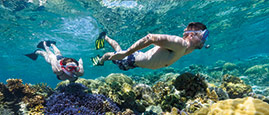
Nurture and advance the development of the rich and exciting Solomon Islands niche markets.
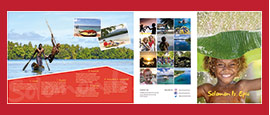
Serve as the primary source of SI tourism related research, marketing, training and resource materials.
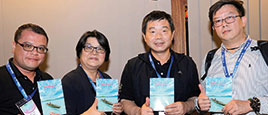
Provide education and training programmes that support unified marketing initiatives.
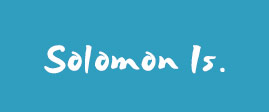
Serve as the Solomon Islands ‘Brand Champions’ both nationally and worldwide.
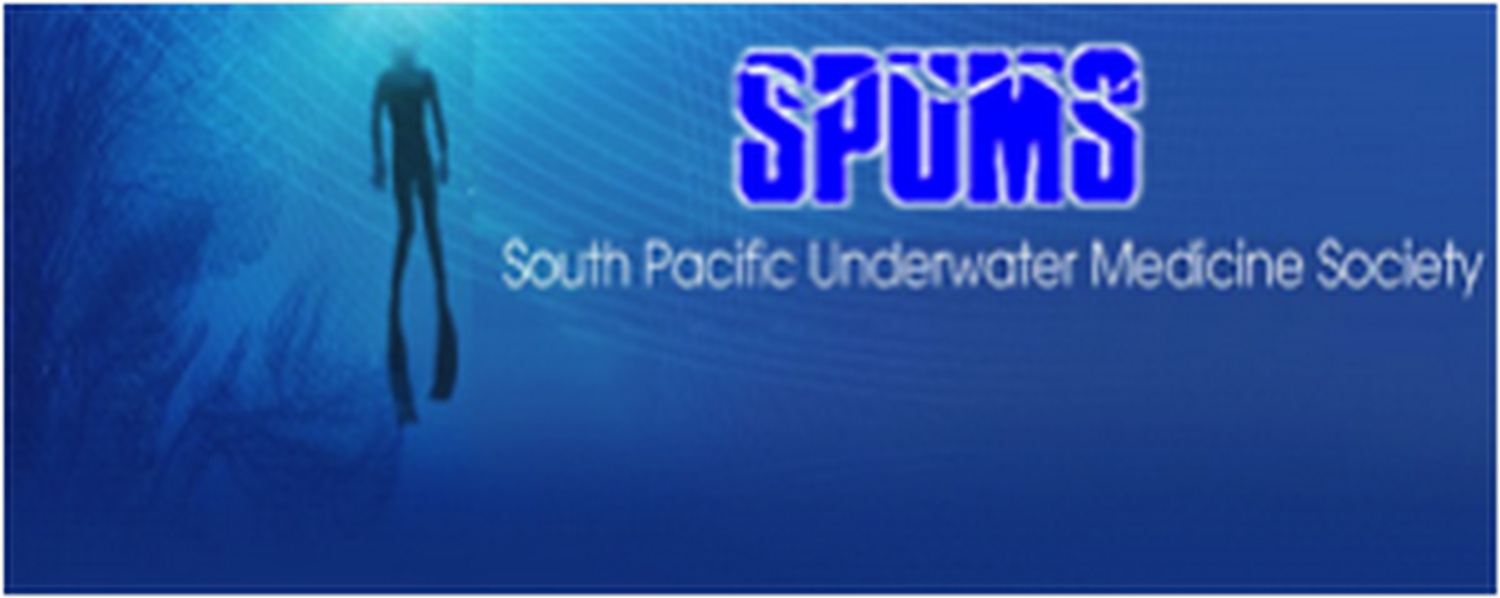
South Pacific Underwater Medicine Society (SPUMS)
SPUMS 48th Annual Scientific Meeting 2019 Venue: Solomon Kitano Mendana Hotel, Solomon Islands Theme: “Old divers and bold divers but not old, bold divers” Cardiovascular health risk […]
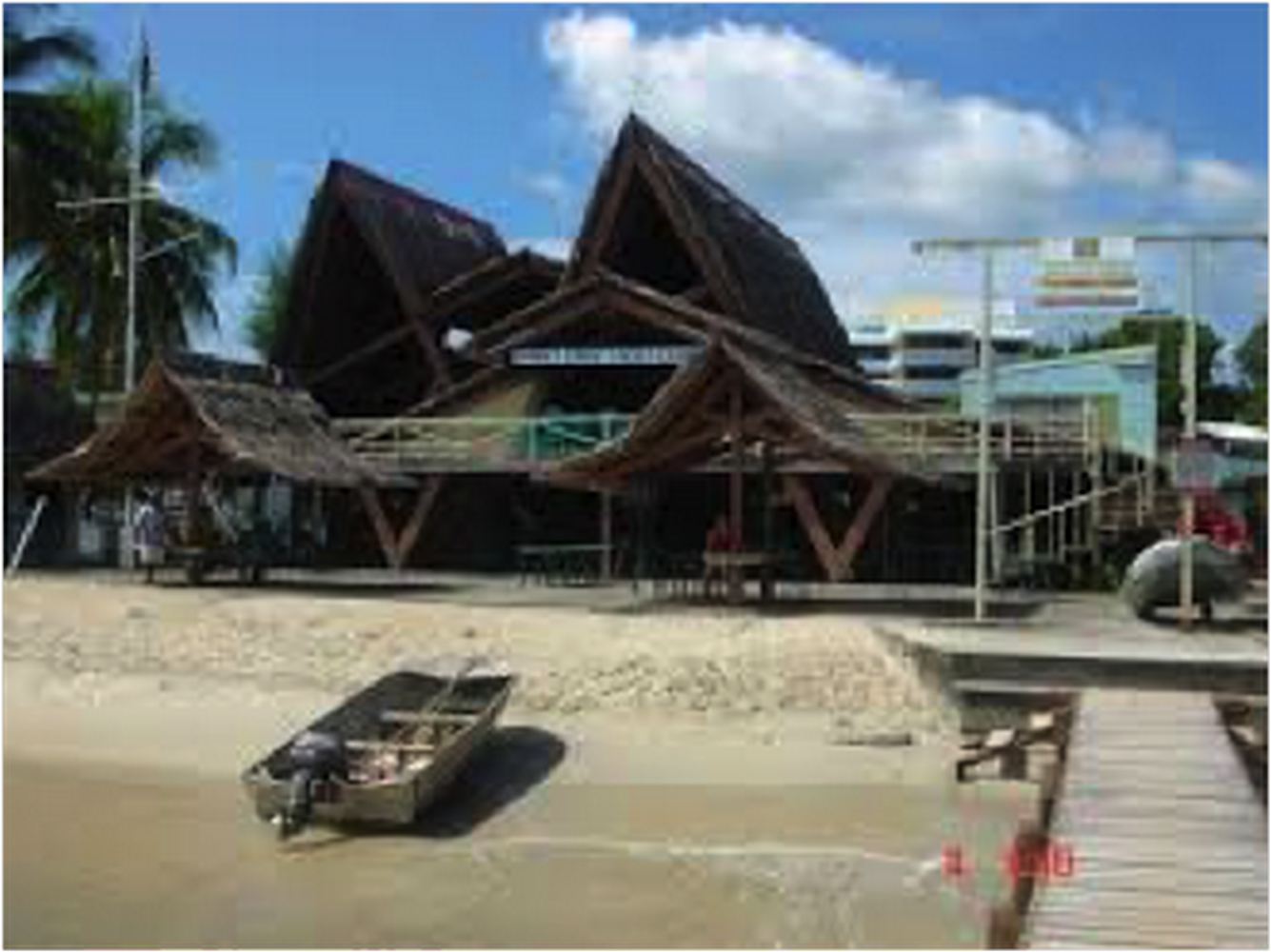
PCYC Fishing Competition
The Point Cruz Yacht Club runs a fishing competition twice a year in April and in December. The competitors are from various local fishing enthusiasts and […]
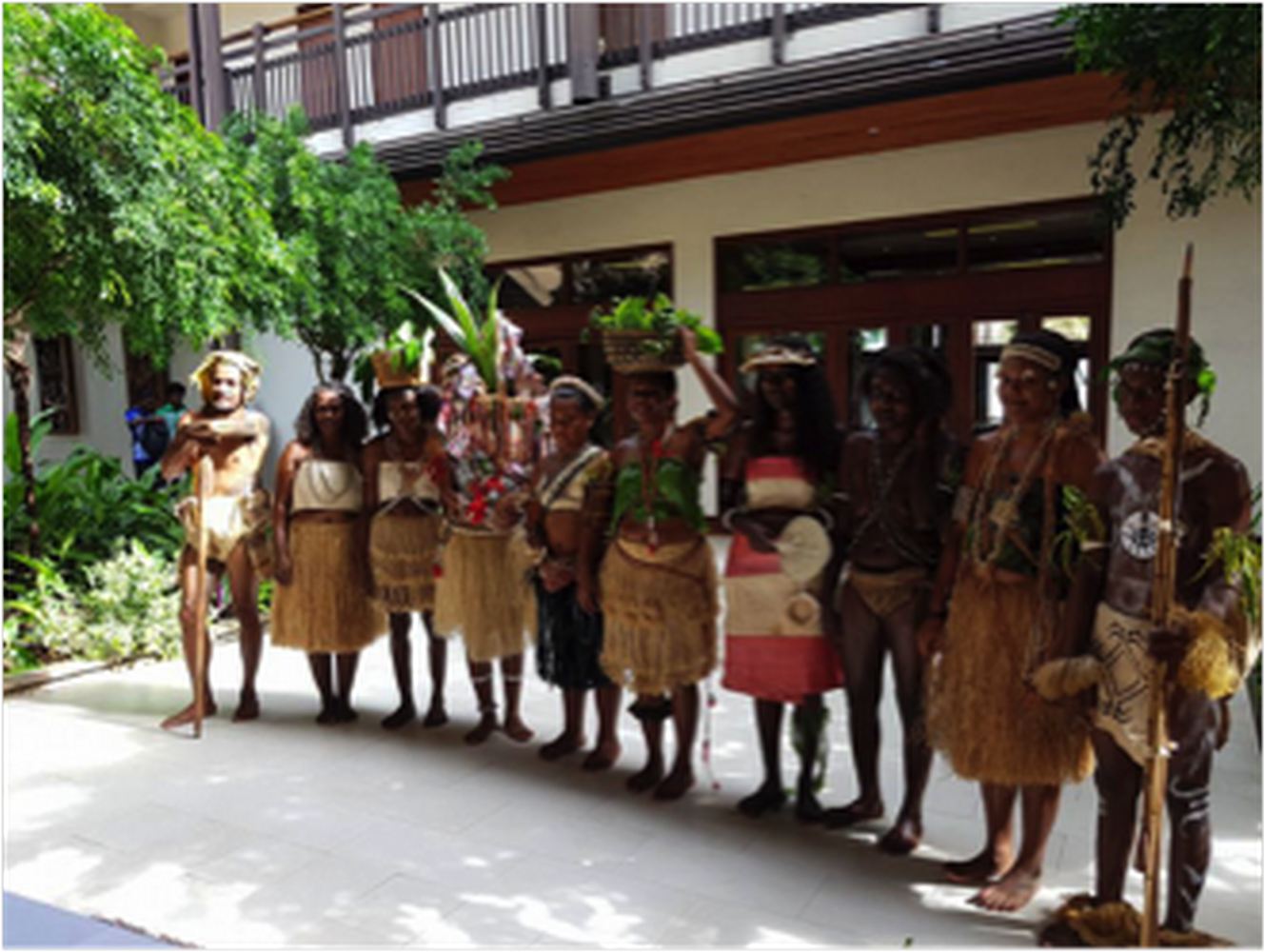
Tourism in Focus
Tourism in Focus kick starts the year with a big bang. The Tourism Solomons Office will bring the industry together to inform them about the activities […]
Publications/Resources
The sintds strategy implementation, international visitor survey 2016, assessment of the economic impact of cruise tourism in papua new guinea and solomon islands, the solomon islands visitors bureau act 1996, signup & enquiry.
This helps us prevent spam, thank you.

29 Interesting Facts About the Solomon Islands
T he most interesting facts about the Solomon Islands, from an island named after US President Kennedy to a giant rat that fell from a tree.
Official name: Solomon Islands
Capital city: Honiara
Population: 726,799
Area: 28,896 sq km
Major languages: Melanesian pidgin, English
Time zone: UTC+11
Interesting facts about the Solomon Islands
1. The Solomon Islands are an island nation located in Oceania. They consist of approximately 992 small islands, atolls and reefs.
2. Only 347 of the islands are populated. The six major islands are Choiseul, Guadalcanal, Malaita, Makira, New Georgia and Santa Isabel.
3. The Solomon Islands are the third-largest archipelago in the South Pacific.
4. The first settlers of the Solomon Islands were Papuan-speaking hunter-gatherers from New Guinea. They inhabited the islands for possibly as long as 50,000 years before Austronesian-speaking early Melanesians began arriving around 4000BC.
5. The Lapita people appeared in the Solomon Islands around 3,000 years ago – between 2000 and 1600BC.
6. The first European to explore the islands was the Spanish explorer Alvaro de Mendana in 1568.
7. Believing that gold was present, Mendana named the islands Isles of Solomon, after the legendary King Solomon’s mines.
8. The Solomon Islands were colonised by the UK in the 19th century. The British Solomon Islands Protectorate was declared in 1893.
9. The protectorate was informally known as “The Happy Isles”.
10. In 1942, during the Second World War, the Solomon Islands were occupied by Japan. There was extensive fighting, especially during the decisive Battle of Guadalcanal. The Japanese were eventually forced from the islands by the Allies in 1945 and British rule was restored.
11. Today, the islands are popular with scuba divers due to the numerous Second World War submarine, ship and aircraft wrecks.
12. US President John F Kennedy kept a coconut shell in his Oval Office as a reminder of when he was marooned in the Solomon Islands in 1943. After his boat sank, he was rescued by two Solomon Islanders called Eroni Kumana and Biuku Gasa.
13. The president, along with 10 other survivors, swam to the uninhabited Plum Pudding Island. It has now been renamed Kennedy Island.
14. In 1976, the Solomon Islands became self-governing before achieving complete independence from the UK in 1978 with Prime Minister Peter Kenilorea in power.
15. The national flag consists of triangles of blue, which represents the importance of water, and green, which represents trees and crops, separated by a yellow diagonal stripe which represents the sun. In the upper corner are five white stars which stand for the original five provinces that initially made up the country.
16. Between 1998 and 2003, the Solomon Islands was gripped by a crisis known as “the tensions” in which armed combat took place between militants from the islands Guadalcanal and Malaita.
17. In 2000, Prime Minister Bartholomew Ulufa’alu was taken hostage by the Malaitan Eagle Force. He was subsequently forced to resign.
18. In 2003, an Australian-led peacekeeping force was deployed in the Solomon Islands. It stayed for 14 years until 2017.
19. In the late 19th century, the Solomon Islands were among several Pacific islands to suffer from ‘blackbirding’. Blackbirding was the kidnapping of people for use as forced labour on plantations in Fiji and Australia. The grotesque practice ended around 1872 and led to several countries banning overseas-labour recruitment.
20. It’s believed that approximately 30,000 labourers from the Solomon Islands were recruited between 1870 and 1910 to work on plantations in Fiji and Queensland, Australia.
21. The Solomon Islands’ coat of arms is a shield framed by a crocodile and a shark. The motto “To Lead Is To Serve” is displayed beneath it. On the shield are an eagle, a turtle, a war shield and some fighting spears.
22. Despite being an official language, only around 1-2% of the population speak English. There are approximately 120 indigenous languages also spoken in the Solomon Islands.
23. In 2019, the UK’s Prince Charles visited the Solomon Islands and “delighted” a crowd of Solomon Islanders by addressing them in pidgin. He said “Mi hapi visiting to place blong yu fela,” to applause from the crowd.
24. The Solomon Islands are one of just 22 countries not to have an army.
25. In 2017, a species of giant rat capable of opening coconuts with its teeth was discovered in the Solomon Islands. For decades, no one could prove the creature existed, then in 2015, one fell from a tree as it was cut down. The rats can grow up to 45cm long and weigh 0.5kg.
26. The Solomon Islands have 173 bird species, 69 of which are endemic and cannot be found anywhere else in the world.
27. Rennell Island in the Solomon Islands is the largest raised coral atoll in the world at 86km long and 15km wide. East Rennell is part of Rennell Island and is the country’s only UNESCO World Heritage site.
28. The Solomon Islands have over 4,500 plant species including 230 varieties of orchids.
29. Finally, dense rain forest covers around 90% of the islands.
Every effort has been made to verify these facts about the Solomon Islands. However, if you find an error or have any questions, please contact us .


- About the Government
- Gazettes and Legislations
- Health Facilities Map
- About Solomon Islands
- COVID-19 Updates
- Office of the Prime Minister and Cabinet
- Ministry of Agriculture and Livestock
- Ministry of Commerce, Industry, Labour and Immigration
- Ministry of Culture and Tourism
- Ministry of Education and Human Resources Development
- Ministry of Environment Climate Change Disaster Management and Meteorology
- Ministry of Finance and Treasury
- Ministry of Fisheries and Marine Resources
- Solomon Islands Office of The Auditor General
- Ministry of Forestry and Research
- Ministry of Health & Medical Services
- Ministry of Home Affairs
- Ministry of Infrastructure Development
- Ministry of Justice and Legal Affairs
- Ministry of Lands Housing and Survey
- Ministry of Mines, Energy & Rural Electrification
- Ministry of National Planning and Development Coordination
- Ministry of Police, National Security and Correctional Services
- Ministry of Public Service
- Ministry of Rural Development
- Ministry of Traditional Governance, Peace and Ecclesiastical Affairs
- Ministry of Women, Youth, Children and Family Affairs
- Attorney General’s Chambers
- Culture Division
- Customs and Excise Division
- Electoral Commission
- Office of the Director of Public Prosecutions
- Royal Solomon Islands Police Force
- SIG ICT Services
- Solomon Islands National Statistics Office
- Solomon Islands Law Reform Commission
- Solomon Islands Inland Revenue Division
- The Leadership Code Commission
- The Office of the Ombudsman
- Tourism Solomons
NEW MINISTER MRD MEETS PRC AMBASSADOR TO SOLOMON ISLANDS

New Minister for MRD Honourable Rollen Seleso and the Chinese Ambassador to Solomon Islands His Excellency Cai Weiming during their official meeting at the Chinese Embassy in Honiara on May 7, 2024.
The newly appointed Minister for the Ministry of Rural Development (MRD) Honourable Rollen Seleso has begun his official engagement through a courtesy meeting with the Chinese Ambassador to Solomon Islands His Excellency Cai Weiming at the Chinese Embassy in Honiara on May 7, 2024.
During the meeting, Minister Seleso and H.E. Weiming discussed the exceptional relationship and common partnership that Solomon Islands and the People’s Republic of China (PRC) have shared over the past five years and discussed their mutual priorities for years ahead.
These included continuous support to the implementation of the Rural Sustainable Development Program (RSDP) funded by PRC, Technical capacity training for officers, continuous support to rural development and the decentralization of government services and initiation of economic projects through the proposed constituency growth centers, a potential the ministry will propel in close collaboration with willing donor partners including the Chinese Embassy for the benefit of all rural Solomon Islanders.
Minister Seleso and H.E. Weiming also exchanged views on the Solomon Islands-China relations and issues of mutual interest.
Hon. Seleso was the first Minister under the newly formed Government for National Unity and Transformation (GNUT) regime to have paid a courtesy visit to the Chinese Ambassador.
Minister Seleso assured H.E. Weiming that the Government looked forward to working closely with his office in the continuity and furthering of our mutual and genuine friendship.
“Since the establishment of our diplomatic ties in September 2019, our two countries have enjoyed a very fruitful and progressive friendship.
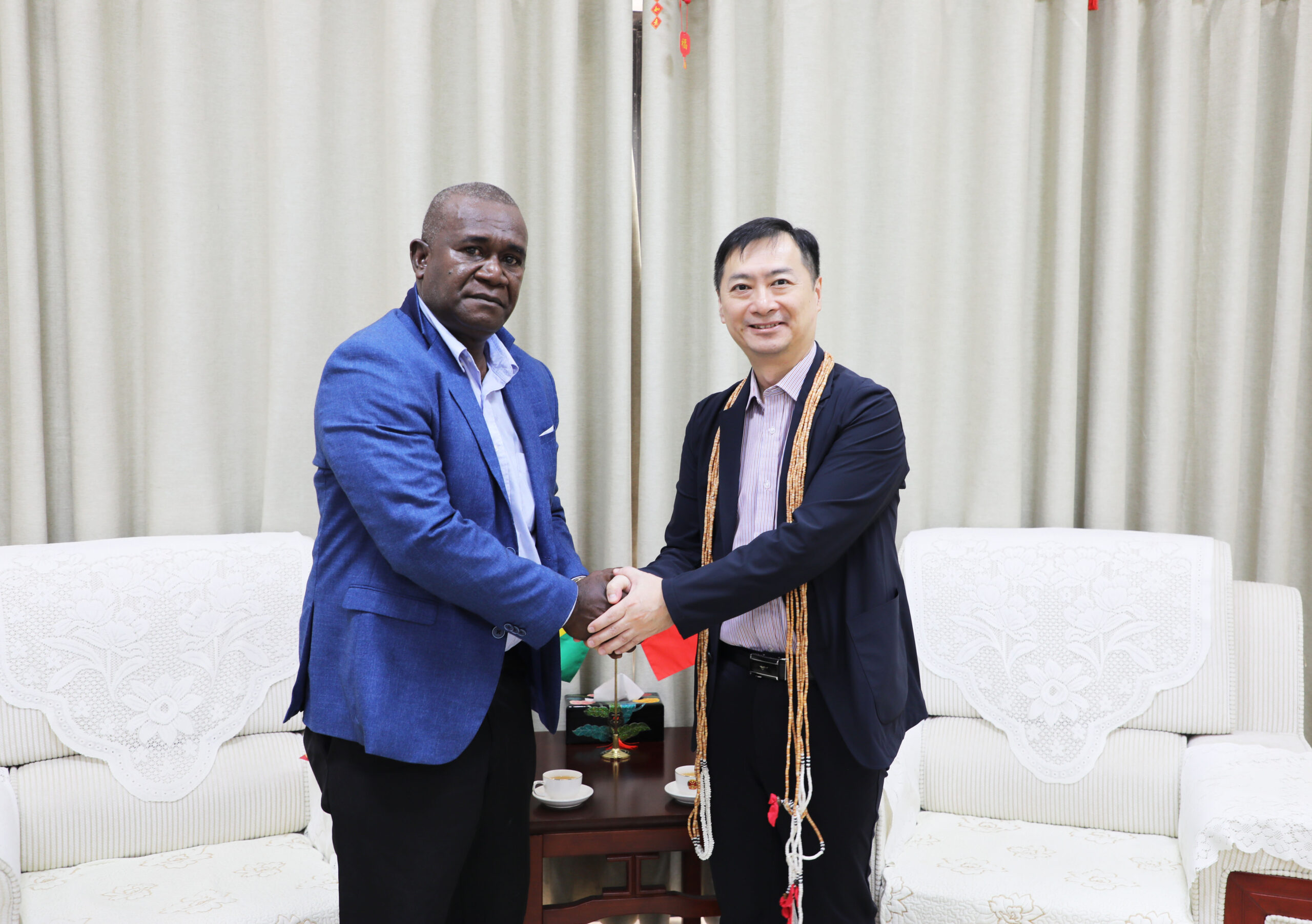
As a show of appreciation and respect by MRD towards the Chinese Embassy and its government, Minister Seleso presented to H.E. Weiming a traditional shell money from Guadalcanal Province which he is pleased to receive with great honour.
“Our friendship is built on mutual trust, understanding, and respect for each other and our relations have grown from strength to strength, and will continue to flourish in the years ahead,” Minister Seleso told H.E. Weiming.
The Minister also used the opportunity and acknowledge H.E. Weiming and the government of China for the many assistance rendered to the people of Solomon Islands through MRD.
“MRD has been the recipient of CDF funding assistance in the past. This funding has helped a lot of our isolated citizens.
“Officers of the ministry also received technical eye-opening training in China last year and, new batches of trainees are soon departing for China for other sets of training this year. Such trainings will build the capacity of our officers as they learn from your great country.
“My ministry is also very happy to be the focal point for implementing the RSDP.
“RSDP has truly benefited countless Solomon islanders through projects such as water supply and sanitation, vehicles and equipment, transportation, schools, clinics, small infrastructures and many more.
“I am pretty sure that our citizens are steadily valuing our friendship as they proved it themselves that China is a true friend of Solomon Islands,” Minister Seleso attested.
“Your Excellency, my ministry looks forward to continue collaborating with your government through your Embassy in the continuity of the RSDP. There are also other areas that the ministry is very much interested in working closely with your Embassy, particularly on the decentralization of government services and initiation of economic projects through the proposed constituency development growth centers,” he further said.
Minister Seleso then thanked H.E. Weiming for his strong leadership and steadfast commitment to the SI-PRC friendship, and the continuous rendering of assistance to the people of Solomon Islands through MRD.
Hon. Minister Seleso was accompanied by his Permanent Secretary Dr. Samson Viulu.
Meanwhile, H.E. Weiming recognized Hon. Minister Seleso and his PS Dr. Viulu for the courtesy meeting and MRD’s continuous close cooperation with the Embassy.
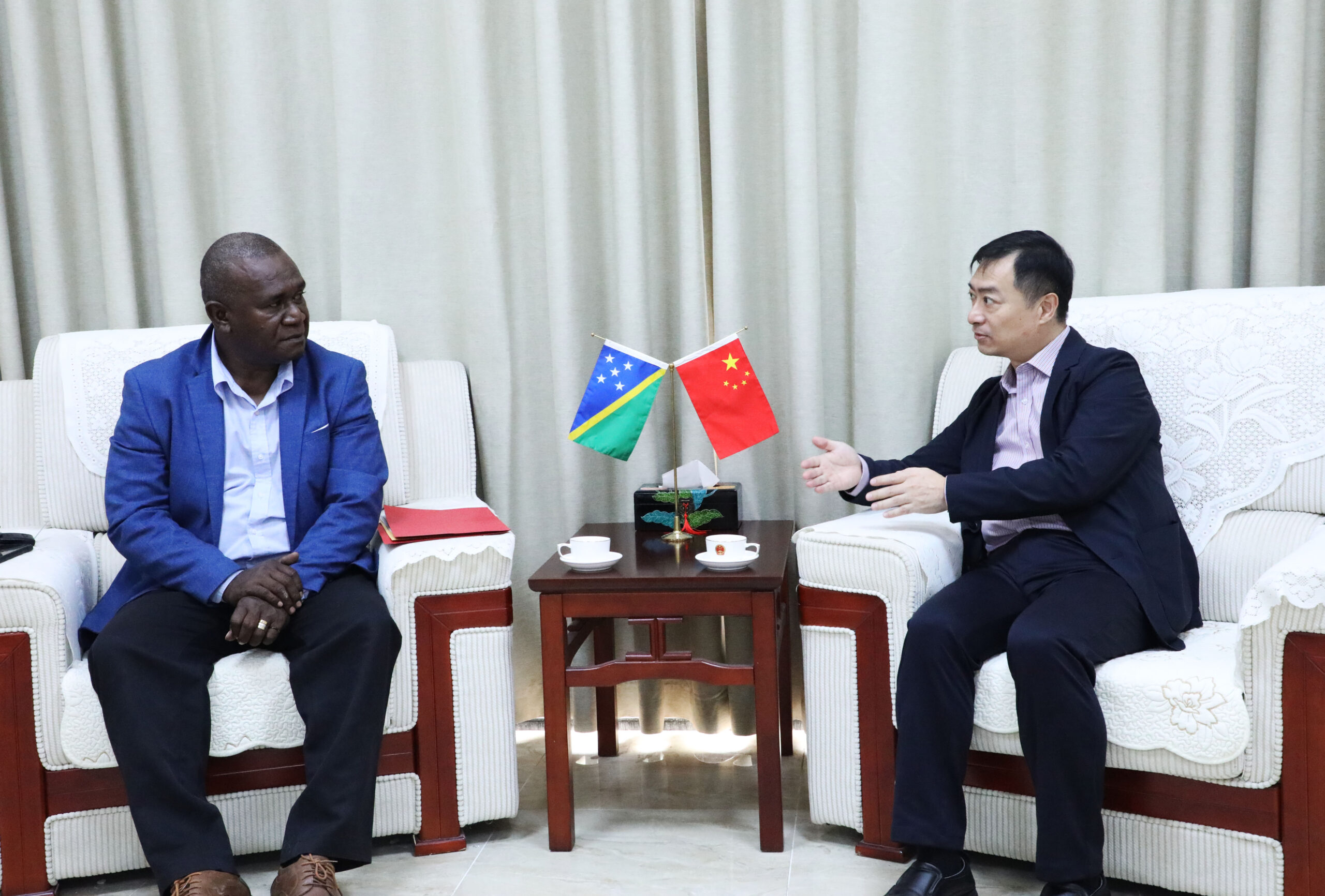
New MRD Minister Hon. Rollen Seleso and the PRC Ambassador to Solomon Islands H.E. Cai Weiming during their official meeting at the Chinese Embassy in Honiara.
He said PRC through its Embassy will continue to work closely with the government to deliver livelihood collaborative projects and provide assistance in other areas of cooperation to support programs that will bring maximum benefits to the people.
“We remain loyal to our friendship and so, we will continue to deliver support to rural development programs that will bring many benefits to the ordinary citizens of this country.”
With regards to rural development, H.E. Weiming assured Minister Seleso that PRC will continue to support implementation programs under MRD especially the continuity of the RSDP program towards improving people’s socio-economic livelihood.
H.E. Weiming further reiterated that in the past 5 years, Solomon Islands and China have worked together and achieved tangible results.
“When we address our peoples’ needs in our rural places, we also help to eradicate poverty,” he added.
H.E. Weiming further stressed that for 5 years Chinese Embassy has supported MRD and they will continue to show that same support and cooperation now and into the future for the benefit of the Solomon Islands.
“I am pleased that this cooperation has benefitted our rural people, especially through project assistance delivered through the CDF program and now the RSDP program funded by PRC and implemented by MRD.
“We will continue to honor our commitment to support the government through MRD and continue to work together to achieve the Ministry mandates and also for our future cooperation,” he added.
Minister Seleso again thanked H.E. Weiming and his staff for accepting the visit and acknowledged their continuous support to his ministry and the government.
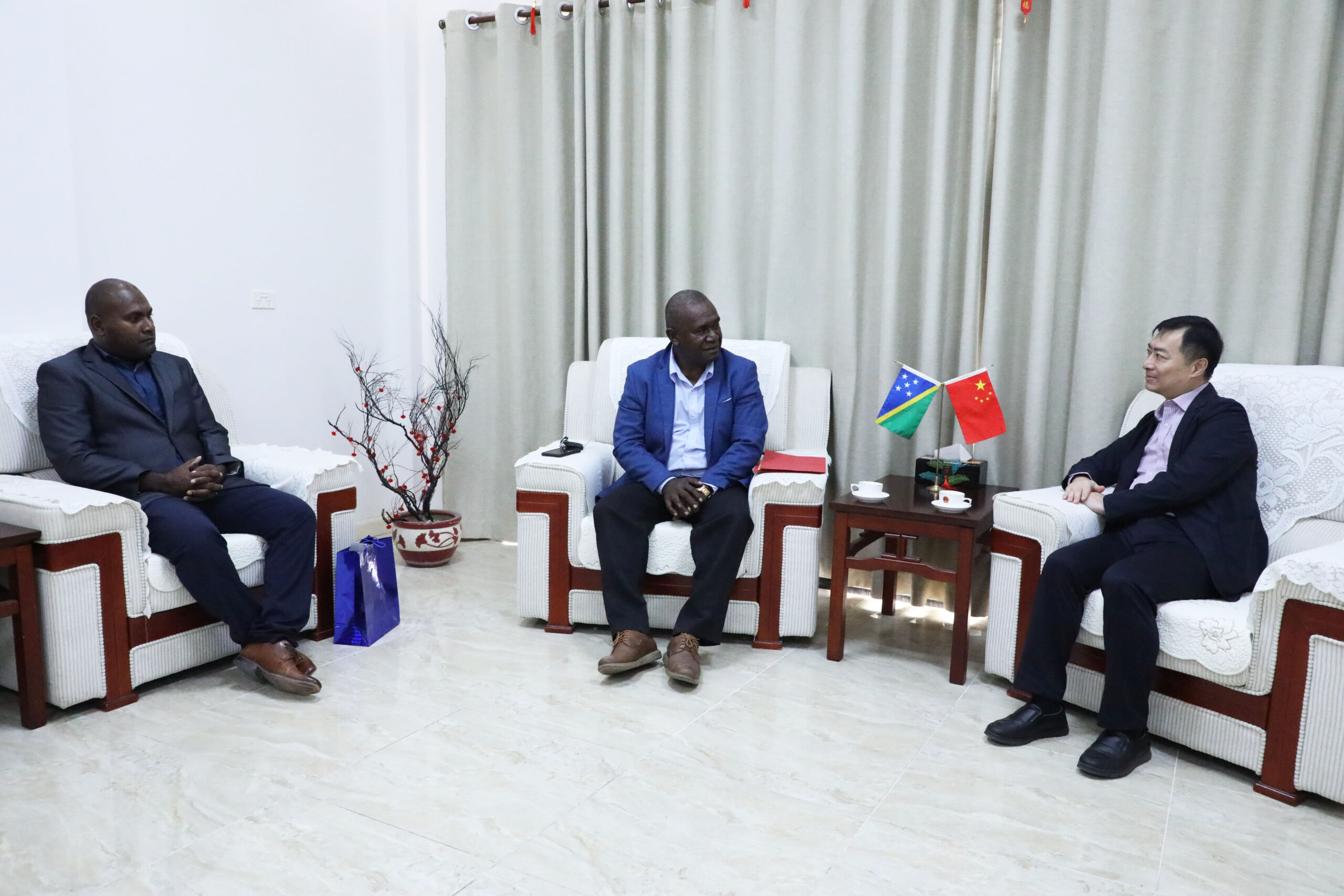
New MRD Minister Hon. Rollen Seleso and the PRC Ambassador to Solomon Islands H.E. Cai Weiming during their official meeting at the Chinese Embassy in Honiara. Minister Seleso was accompanied by his Permanent Secretary Dr. Samson Viulu.
– MRD Press

IMAGES
COMMENTS
CPI increases from 0.6 percent in December 2023 to 1.3 percent in January 2024. Mar 1, 2024 | Consumer Price Index, Statistics. Welcome to the Solomon Islands National Statistics Office (SINSO) website. This website aims is to provide on a regular basis a wide range of timely and good quality statistics that can be used for planning and policy ...
The Solomon Islands National Statistics Office, SINSO, released the latest Visitor Arrivals bulletin on Friday 6 th October 2023. Compared to the same quarter a year ago, an increase of 521.4% was recorded, noting the post-Covid19 resumption in international travel in early 2023.
International tourism, number of arrivals - Solomon Islands World Tourism Organization, Yearbook of Tourism Statistics, Compendium of Tourism Statistics and data files. License : CC BY-4.0
The first quarter of visitor arrivals to Solomon Islands in 2023, records a total of 8,323 visitors, a decrease of 15.8% compared to the previous quarter (4th quarter 2022). In contrast to the same quarter a year ago (during the Covid-19 period), an increase of 697.2% was recorded.
The Solomon Islands National Statistics Office, SINSO, has released the second quarter of 2020 Annual Visitors Report. Government Statistician Douglas Kimie distributed the report on April 27th 2021.
comes from Table 3: Visitor Arrivals to the Solomon Islands by Month: January 2009 - June 2021. 0 10 20 30 40 50 60 70 80 Intending Resident Returning Resident Visitor Percentage (%) Arrival Category Source:Solomon Island National Statistics Office,Visitors Arrival Second Quarter 2021
The value for International tourism, number of arrivals in Solomon Islands was 4,400 as of 2020. As the graph below shows, over the past 25 years this indicator reached a maximum value of 28,900 in 2019 and a minimum value of 4,400 in 2020. Definition: International inbound tourists (overnight visitors) are the number of tourists who travel to ...
(13.6%) and Transit & Stop over (4.8%). This information comes from Table 5: Visitor Arrivals to the Solomon Islands by Country of Residence by Purpose of Visit by Sex: 1st Quarter 2019. Chart 4: Percentage of Visitor Arrivals to the Solomon Islands by Purpose of Visit, 1st Quarter 2019 0 10 20 30 40 Business & Conference Holiday & Vacation
Solomon Islands tourism statistics for 2020 was 7,000,000.00, a 91.46% decline from 2019. Solomon Islands tourism statistics for 2019 was 82,000,000.00, a 10.87% decline from 2018. Save as Image. International tourism receipts are expenditures by international inbound visitors, including payments to national carriers for international transport.
This factsheet highlights the importance of Travel & Tourism to the Solomon Islands across many metrics, and features details such as: Contribution of the sector to overall GDP and employment; Comparisons between 2019 and 2023; Forecasts for 2024 and 2034; International and domestic visitor spending;
The National Statistics Office has released the final International Arrivals bulletin for 2021, which saw an increase of visitors to Solomon Islands in quarter four compared to the previous quarter, overshadowed by a declining trend since March 2020 as a consequence of the SOPE restrictions on travel.
The figures, released by the Solomon Islands National Statistics Office (SINSO), reveal a total of 3,940 international visitors travelled through Honiara International Airport between January and March 2023, the figure pipping the Q1 2020 3,880 result by 1.5 percent. Australians again continue to make up the bulk of the visitors, accounting for ...
The Solomon Islands Tourism Business Survey and Confidence Index report presents results from an online tourism business survey conducted from December 2020 to February 2021. Over this three-month period, 152 businesses were contacted and 34 completed surveys were received - a conversion rate of 22%.
The figures, released by the Solomon Islands National Statistics Office (SINSO), reveal a total of 3,940 international visitors travelled through Honiara International Airport between January and March 2023, the figure pipping the Q1 2020 3,880 result by 1.5 percent.
Solomon Islands Tourism Recovery Plan 2021-2030 Solomon Islands' interim sector strategy and recovery plan, released 2021. Developed by the Government of Solomon Islands, Ministry of Culture and Tourism and Tourism Solomons (2021) in response to COVID-19, the plan details five points for recovery:
The Solomon Islands Tourism: Investor Guide has been developed to help investors understand the process of investing in land for tourism development projects. It provides practical information to help investors understand registered land leases and development. Over 60 sites with potential for tourism development are showcased in the Solomon ...
The data reached an all-time high of 6.600 USD mn in 2007 and a record low of 0.200 USD mn in 2016. SB: International Tourism: Expenditures: for Passenger Transport Items data remains active status in CEIC and is reported by World Bank. The data is categorized under Global Database's Solomon Islands - Table SB.World Bank: Tourism Statistics.
Solomon Islands Climate: There are basically two seasons in 'the Sollies,' the dry (and cooler) season April to October and the wet (and warmer) season the other part of the year. The temperatures remain quite temperate year-round, with averages of 27 degrees Celsius (about 80F) year round. Solomon Islands Language: The official language in ...
Solomon Islands. The Human Capital Index (HCI) database provides data at the country level for each of the components of the Human Capital Index as well as for the overall index, disaggregated by gender. The index measures the amount of human capital that a child born today can expect to attain by age 18, given the risks of poor health and poor ...
The number of tourist arrivals in Solomon Islands fell 48.6 per cent in the first quarter of 2020 due to impact of coronavirus (COVID-19) pandemic worldwide and in our region, the Solomon Islands National Statistics Office said, Wednesday 3 June. Government Statistician Douglas Kimi while releasing the International Arrivals statistical report ...
Welkam to the Solomon Islands, an undiscovered paradise, a scattered, emerald green necklace of 992 islands where time has chosen to stand still, where happy, smiling people go about their day to day lives ensuring the customs and traditions of yesteryear remain the very backbone of life in this true South Seas idyll. Little has changed in the ...
The most interesting facts about the Solomon Islands, from an island named after US President Kennedy to a giant rat that fell from a tree. Official name: Solomon Islands Capital city: Honiara ...
The work is borne of SPC's expertise in civil registration and vital statistics, and the support of its partners in development. Mr Jeff Montgomery, SPC's Civil Registration and Vital Statistics Adviser, formerly New Zealand's Registrar-General, co-authored the report with consultant Mr Zoran Djokovic.
Release of the 2019 National Population and Housing Census National Reports and Population Projections . The Solomon Islands National Statistics Office (SINSO) is pleased to release the final 2019 National Population and Housing Census National Reports and the Population Projections for the period 2020-2064.
NEW MINISTER MRD MEETS PRC AMBASSADOR TO SOLOMON ISLANDS . The newly appointed Minister for the Ministry of Rural Development (MRD) Honourable Rollen Seleso has begun his official engagement through a courtesy meeting with the Chinese Ambassador to Solomon Islands His Excellency Cai Weiming at the Chinese Embassy in Honiara on May 7, 2024.